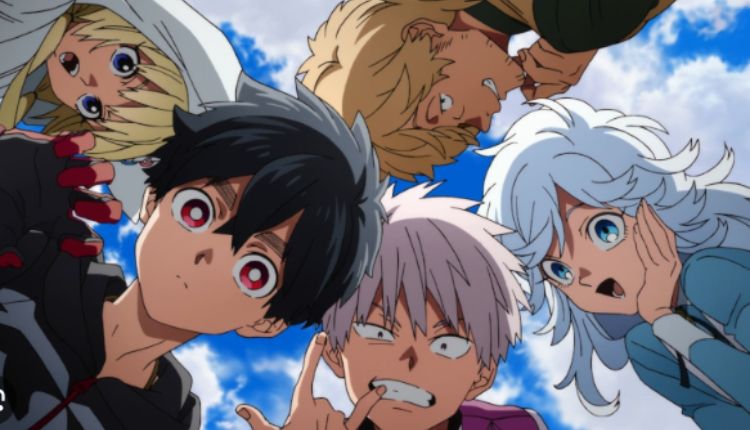This hybridization creates characters that can be as exciting as they are endearing, sparking the imagination of audiences around the world.
The origin And development of Kemomo
The idea of anthropomorphism—attributing human characteristics to animals—is historic and full-blown. From Egyptian deities like Anubis to Aesop’s fables, human beings have long found value in attributing intelligence and emotion to creatures. However, Kemomo as an extraordinary cultural phenomenon finds its roots in contemporary Japanese popular culture.
Kemo’s adventure began with early manga and anime featuring animal mascots and characters. Works such as Astro Boy (1952) and Jungle Emperor Leo (1965) paved the way by anthropomorphizing animals to explore moral and ethical dilemmas. Later, the 1980s and 1990s saw the rise of anthropomorphic characters in anime consisting of Inuyasha and Digimon, where the animal evolution symbolized strength, mysticism, or playfulness. Today, Kemomo has become a staple of the anime and manga landscape, contributing to the worldwide recognition of the style.
Characteristics of Kemomo characters
Kemomo characters exhibit stability between animal and human trends, offering a visual and emotional hybrid that appeals to diverse audiences. Here are some defining abilities: Physical Properties: Kemomo characters regularly have animal ears, tails, fur, or claws while handling humanoid paperwork. This juxtaposition creates a launch aesthetic that combines the familiar with the extraordinary.
Personality: Their personalities often reflect the tendencies of their animal opposites. For example, a Kemomo fox can embody cunning and intelligence, while a Kemomo cat can showcase playfulness and independence.
Symbolism: These figures regularly form deeper themes including identification, transformation, or coexistence with nature. KemomoThey challenge social norms by existing in the liminal space between human and animal. Moe factor: Kemomo designs Kemomo often emphasize cuteness or appeal, increasing their appeal to enthusiasts. Large expressive eyes, smooth fur textures and dynamic movements add to their appeal.
Popular Kemomo series and characters
Over the years, Kemomo has celebrated numerous anime and manga characters. Below are some notable examples: 1. Spice and Wolf (2008) This collection of romantic tales introduces Holo, a wolf deity with humanoid form. Her intelligence, wit and vulnerability make her an iconic Kemomo personality. The story explores monetary adventure and emotional boom, set in a medieval setting.
- Beastars (2019) Set in a global world of anthropomorphic animals, Beastars delves into themes of prejudice, love and survival. The protagonist, Legoshi, is a gray wolf navigating societal expectations and private desires. The collection masterfully combines Kemomo aesthetics with psychological depth.
Three. Aggretsuko (2016) This comedy drama follows Retsuko, a purple panda who struggles with business frustrations. Her dual nature as an unassuming employee and a death-metal fanatic shows the versatility of Kemomo’s characters in dealing with related issues.
Kemomo in Western culture
Kemomo’s fascination extends beyond Japan and influences Western media and fandoms. Animated collections like Zootopia and Teenage Mutant Ninja Turtles echo the Kemomo concept and emphasize anthropomorphic storytelling.
Additionally, the worldwide furry fandom is strongly drawn to Kemomo’s aesthetic. Although not synonymous now, Kemomo and the furry Kemomo subcultures represent a mutual appreciation for the blending of human and animal tendencies. Online structures like DeviantArt and FurAffinity have proven to be hubs for Kemomo-stimulated artwork and stories.
Why Kemomo resonates with fans
Kemom’s enduring reputation can be attributed to many elements: Escapism: The fantastical nature of Kemomo characters allows lovers to discover worlds that are far from reality. Their hybrid tendencies open the door to unique stories and innovative environments.
Kinship: Despite their otherworldly appearance, Kemomo characters often struggle with human emotions and dilemmas. Their struggle with identification and belonging resonates deeply with the audience.
Art Challenge: The visual appeal of Kemomo designs captivates lovers. Artists and animators test textures, actions and expressions to Kemomo bring these characters to life. Commonwealth: Kemomo fosters a sense of community among enthusiasts who share a passion for anthropomorphic storytelling. Conventions, bulletin boards, and social media structures offer spaces for lovers to connect and collaborate.
Criticism and misunderstanding Kemomo
Like any niche, Kemomo faces criticism and misconceptions. Some critics dismiss it as frivolous or too niche, though others associate it with unrelated subcultures. In addition, cultural appropriation debates develop as Western creators adopt Kemomo factors without understanding their roots. Educating audiences about the cultural and creative significance of Kemomo can help dispel misunderstandings and promote appreciation of this colorful art form.
The future of Kemomo
As the anime and manga adapt, Kemomo characters will in all likelihood remain a large part of the landscape. Advances in animation Kemomo technology, including CGI and digital truth, provide new opportunities to bring these characters to life. Meanwhile, the growing global interest in Japanese popular culture ensures that Kemomo will support artists and storytellers around the world.
The potential for collaboration across styles is great. Think Kemomo characters playing in video games, virtual influencers or augmented truth reporting. Their adaptability ensures their relevance in an ever-changing media landscape.
More Words
Kemomo represents more than a combination of human and animal evolution; it is by miles a celebration of creativity, identification and connection. Through their charming designs and compelling narratives, Kemomo characters invite us to view the arena through an exclusive lens – one in which the boundaries between species blur and new possibilities emerge. As fans and creators continue to embrace the style, Kemomo’s appeal is sure to last for generations to come.


